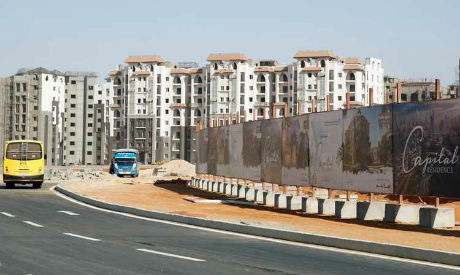
File Photo: A general view of the new Capital Residence residential buildings, in Egypt's new administrative capital in October 18, 2017 (Photo: Reuters)
Egypt's President Abdel- Fattah El-Sisi on Wednesday ordered adopting the latest techniques and international standards in implementing projects and plans of relocating all government bodies to the New Administrative Capital (NAC), highlighting the contribution of such a move to the State's digitization project.
President El-Sisi also urged making the New Administrative Capital a developed information hub that links various state institutions and bodies together in accordance with the global state-of-the-art systems.
The president issued his directives during a meeting with Prime Minister Mostafa Madbouly and Minister of Communications and Information Technology Amr Talaat, Presidential Spokesman Bassam Rady said.
The meeting touched on the status of the communications and information technology projects, atop of which is moving the government offices to the new capital as well as the mechanization of the ministries and the government bodies in cooperation with the major international firms specialized in this field.
During the meeting, the communications minister reviewed the work progress of a number of the projects being implemented by his ministry, including the artificial intelligence strategy, high-speed computing systems and the establishment of the Knowledge City.
Among the ongoing projects at the new capital are the National Academy of Information Technology for Persons with Disabilities and a project for establishing a digital cultural content, Talaat noted.
Construction on the new city, located around 45km east of Cairo, began in 2015 as part of the government's plan to reduce pressure on the existing overpopulated capital, expand urban areas and develop the nation’s infrastructure.
It is being built over 714 square kilometres by tens of thousands of workers, and will be home to a government housing district, 29 ministries and other state institutions – including the cabinet and parliament buildings – and 20 residential neighbourhoods that can accommodate 6.5 million people.
Short link: